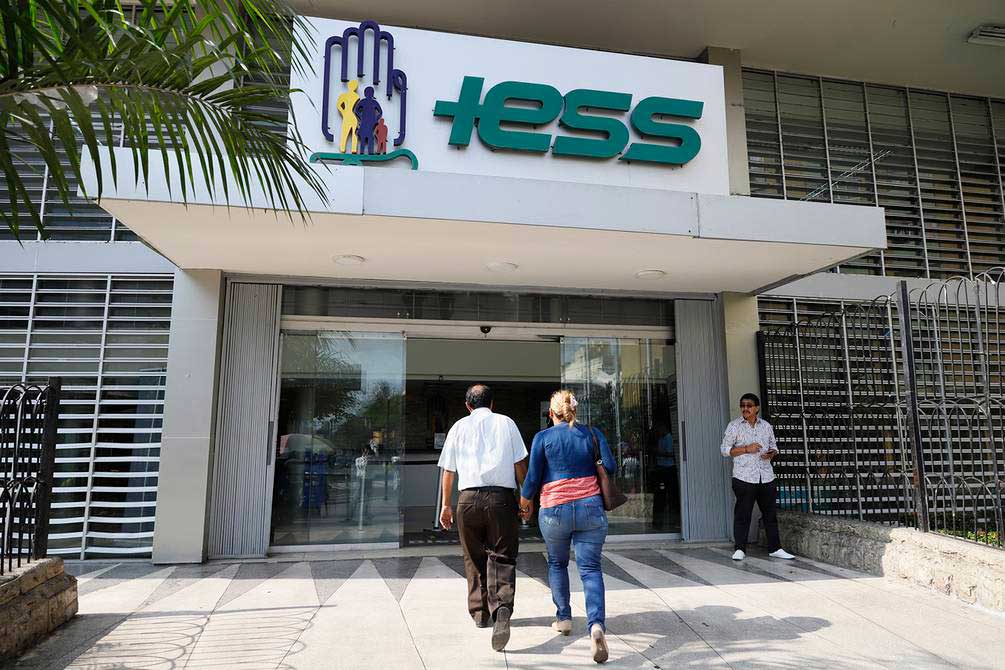Eduardo Peña, President of the IESS Board of Directors, suggests a gradual increase in the contribution rate from 20.6% to 30%.
The Ecuadorian Institute of Social Security (IESS) faces a looming challenge: the rapid aging of the country’s population over the next few decades. To address this, Eduardo Peña, the president of the IESS Board of Directors, advocates for a gradual increase in contribution rates from the current 20.6% to 30%. This adjustment, if implemented, aims to alleviate the strain on the system caused by a growing number of retirees and pensioners.
Massive increase in elderly population
The proposal to elevate contributions comes against the backdrop of projections indicating a significant surge in the elderly population. By 2040, Ecuador is expected to have 1.9 million individuals aged 60 or older—an 85% increase compared to 2022. Moreover, by 2050, this demographic is forecasted to exceed 2.6 million, as per estimates from the National Institute of Statistics and Censuses (INEC). Such a demographic shift will inevitably escalate the financial burden on the IESS, which already struggles to cover pension payments and other expenditures with its existing revenue.
Currently, the IESS relies on a contribution rate of 20.6%, with 9.45% attributed to employees and 11.15% to employers. Peña underscores the necessity of raising this rate to at least 30% gradually. This augmentation would facilitate higher contributions to both Pension and Health insurance schemes, addressing their precarious financial viability. Additionally, Peña advocates for revising the pension calculation basis, proposing that the 30 years of contributions to the IESS should be factored into pension calculations, instead of solely relying on the five best years of salaries.
The looming demographic shift poses substantial challenges to the sustainability of Ecuador’s pension system. The number of IESS retirees is projected to grow at a rate of 4.1% annually from 2022 to 2050, significantly outpacing the 1.1% annual growth in active contributors. This disparity has already led to a decline in the ratio of active workers to retirees—from 10:1 in the early 2000s to an anticipated 2:1 by 2050—a trend that imperils the system’s stability.
Consequently, the deficit between contribution income and pension expenses is forecasted to widen, reaching 12% of Ecuador’s Gross Domestic Product (GDP) by 2050. The IESS is already grappling with a liquidity crisis, evident in its projected pension spending of $6.578 billion for 2024—$800 million more than in the preceding year. Despite the legal mandate for the state to contribute 40% towards pension payments, the actual allocation falls short, forcing the IESS to dip into its pension fund reserves managed by the IESS Bank (Biess).
In 2024, the IESS requested $3.706 billion from the Ministry of Finance to cover pension payments, but received only $2.393 billion, necessitating a divestment of $1.408 billion from Biess reserves. This not only depletes resources earmarked for future pension disbursements but also constrains the bank’s capacity to extend loans to its members.
Healthcare costs are next threat
Moreover, the aging population exacerbates healthcare expenses, compounding the strain on the Health Insurance system. The state’s indebtedness of $4.8 billion for medical care coverage underscores the financial challenges confronting the health sector. With aging individuals comprising a larger proportion of beneficiaries, state subsidies, such as the ‘My Best Years’ pension, face heightened demand, further straining public finances.
The IESS faces a multifaceted challenge stemming from the rapid aging of Ecuador’s population. Peña’s proposal to incrementally raise contribution rates represents a proactive measure to mitigate the impending fiscal strain.
However, addressing the long-term sustainability of the pension and healthcare systems requires concerted efforts, including structural reforms and improved fiscal management, to ensure adequate support for the growing number of retirees and elderly citizens.


They could probably save a lot by charging non-citizens more or not allowing them into the system.
Why is it that everyone refuses to acknowledge the white elephant roaming all over IESS? It is called overinflated BUREAUCRACY. There are actually more personnel than physical space in their offices and health facilities. Tons of people doing nothing other than waiting to cash their absurd salaries. There is where the affiliated money is wasted.
I am sure that is not going to be popular among the general population. They are used to getting by on the minimum. They must raise the retirement age. They need to revise also the health coverage: In the US even private insurance through the employer only covers employee, unless you pay extra for the spouse and children. I do not think that is the case in Ecuador; everyone is covered. Covering home loans and other short term loans is another issue; they may have to consider it is not sustainable. I hope you can ready about the so called Seguro Campesino https://www.iess.gob.ec/es/seguro-campesino It hs also been a drain in an already overworked system I am denying it helps the beneficiaries,but it is not sustainable with the burrent system of contributions